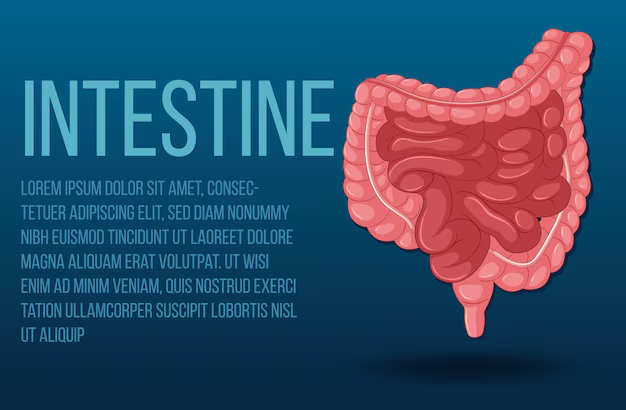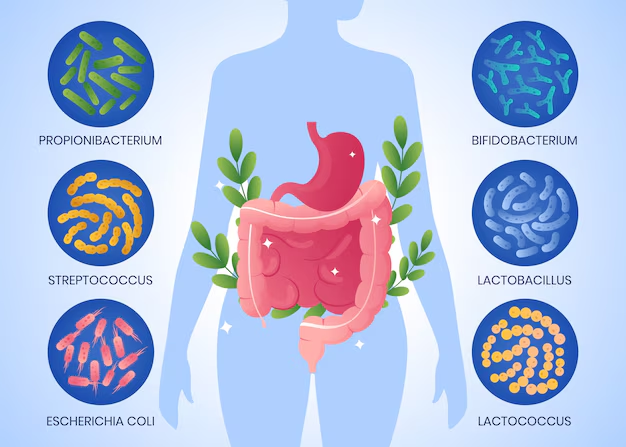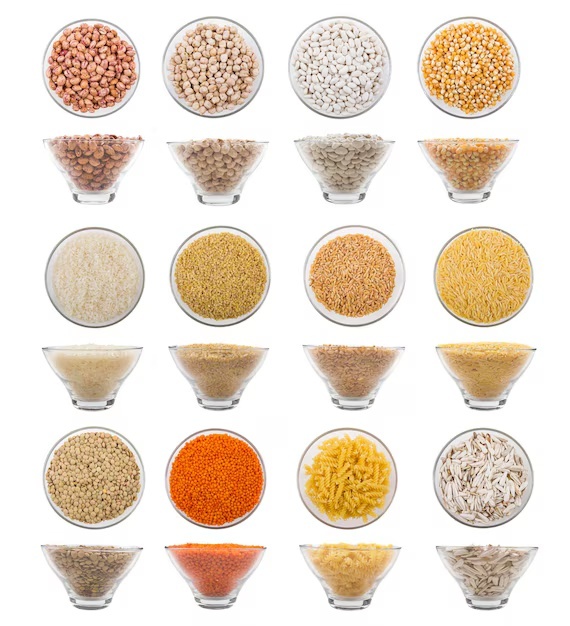Gut Revolution – An Overview
The human Gut – a complex ecosystem teeming with trillions of microorganisms – has transitioned from a largely ignored digestive organ to the epicenter of modern health discussions. What was once thought of simply as a processing plant for food, is now understood to be a key player in immune function, mental wellbeing, and even chronic disease prevention. This paradigm shift has fueled an intense focus on “gut health,” and more importantly, the nutrients that actively promote a thriving gut microbiome.

As a health editor, I’ve seen countless trends come and go. But the focus on these Gut Revolution-supporting nutrients – probiotics, prebiotics, fiber (especially resistant starch), and polyphenols – isn’t a fleeting fad; it’s a profound re-evaluation of how we approach wellness from the inside out. Let’s unpack why this is happening and, crucially, how you can harness these nutrients for your own health.
Table of Contents
The Gut Microbiome: A Symphony of Microbes on Gut Revolution
Before we delve into the individual nutrients, it’s essential to understand the concept of the gut microbiome. It’s not a sterile environment; it’s a diverse community composed of bacteria, fungi, viruses, and other microorganisms – both beneficial and potentially harmful. A balanced microbiome, with a dominance of beneficial bacteria, is crucial for proper digestion, nutrient absorption, and producing vital compounds like vitamins and short-chain fatty acids (SCFAs) that nourish the cells lining your gut.

A dysbiotic (unbalanced) microbiome, on the other hand, can contribute to a range of problems, from digestive woes to systemic inflammation and even neurological disorders. So, how can we actively promote a harmonious gut environment? That’s where probiotics, prebiotics, fiber, and polyphenols come into play.
Gut Revolution: Probiotics The Live Allies
Probiotics are essentially live microorganisms, often bacteria or yeasts, that confer a health benefit when consumed in adequate amounts. They aren’t just transient visitors passing through the digestive system. The goal of probiotics is to colonize the gut, adding to the population of beneficial bacteria, and helping to crowd out the pathogenic microbes. Think of them as “good guys” you invite to strengthen your internal defense system.
- The Power of Diversity: A crucial point is that there isn’t one single probiotic that’s universally beneficial. Different strains of bacteria have unique effects on the body. The most widely researched include Lactobacillus and Bifidobacterium strains. Each strain is associated with particular advantages (some with boosting immunity, others with improving digestion and others with mental health.)
- Food Sources: Fermented foods are your primary sources of natural probiotics. These include:
- Yogurt (with Live Cultures): Look for labels that clearly state “live and active cultures.”
- Kefir: A fermented milk drink with an often higher diversity of probiotic strains than yogurt.
- Kimchi: A Korean staple made of fermented cabbage and other vegetables.
- Sauerkraut: Fermented cabbage, a staple of Eastern European cuisine.
- Kombucha: A fermented tea drink, though probiotic content can vary significantly between brands.
- Tempeh and Miso: Fermented soy products.
- Supplements: Probiotic supplements can be an alternative, but it’s wise to be discerning.
- Strain Specificity: When selecting a supplement, understand that specific strains might be more effective for particular health concerns. A general probiotic won’t be as targeted as a formula with well-researched strains.
- Quality: Not all supplements are created equal. Look for reputable brands and third-party tested products.
- CFU Count: Colony forming units (CFUs) indicates the number of live organisms. A higher number doesn’t always mean better, but you’ll want a supplement containing a clinically-relevant dose.
Gut Revolution; Prebiotics Fueling the Good Guys
If probiotics are the live warriors, prebiotics are the food that fuels them and support Gut Revolution. These non-digestible fibers pass through the upper digestive system and reach the colon, where they act as a nutrient source for beneficial bacteria. Prebiotics essentially help the good guys thrive, encouraging their growth and activity.
Gut Revolution Foods:-

- The Power of Selective Growth: Prebiotics are “selective,” meaning they primarily fuel beneficial bacteria and not the harmful ones. They’re key in creating a balanced gut environment.
- Food Sources: Prebiotic fibers are abundant in plant-based foods:
- Garlic & Onions: Rich in inulin and fructans.
- Bananas (especially slightly unripe): Contain resistant starch and fructooligosaccharides (FOS).
- Oats: A versatile source of beta-glucan and other fibers.
- Asparagus: Contains inulin.
- Leeks: Another source of inulin.
- Chicory Root: A very concentrated source of inulin, often found in coffee substitutes or fiber supplements.
- Apples: Contain pectin.
Gut Revolution: Fiber That is Gut’s Best Friend (Especially Resistant Starch)
Dietary fiber is a broad term encompassing various types of carbohydrates that the body cannot digest. We’re often told to eat enough fiber to prevent constipation and have better blood sugar levels, but that’s just the tip of the iceberg. The critical role that fiber plays in supporting gut health goes far beyond that. It’s not just about bulk; it’s about microbial food.
- Fermentation Powerhouse: Fiber, particularly soluble fiber, undergoes fermentation by gut bacteria, leading to the production of SCFAs. SCFAs like butyrate, acetate, and propionate are crucial for gut health and overall well-being.
- Butyrate: Primary energy source for colon cells and also plays an important role in reducing inflammation and maintaining a healthy gut lining.
- Acetate: Is essential in energy metabolism and may also have an important role in immunity.
- Propionate: Important for liver function and metabolism.
- Resistant Starch: A Special Case: Resistant starch is a unique type of fiber that resists digestion in the small intestine and reaches the colon intact. It acts very similarly to prebiotics, promoting the growth of beneficial bacteria and SCFAs.
- Sources: Cooked and cooled potatoes and rice, slightly unripe bananas, beans, legumes, and oats.
- Why It’s Special: When you cook and then cool starchy foods, a process called retrogradation occurs, which increases the resistant starch content, making them a fiber powerhouse.
- Practical Incorporation: Don’t overwhelm yourself with fiber goals. Increase your fiber intake gradually, drinking plenty of water to avoid bloating or constipation
Gut Revolution: Polyphenols, Gut’s Antioxidant Powerhouse
Polyphenols are a vast group of plant compounds known for their antioxidant properties. Beyond their ability to fight free radicals, research has uncovered a link between polyphenols and a more diverse and healthy gut microbiome. These compounds are not readily absorbed in the small intestine so many reach the colon where they interact with gut bacteria.
- Fueling Microbial Diversity: Polyphenols may promote the growth of beneficial bacteria and increase microbial diversity in the gut. It is believed that the gut bacteria metabolize the polyphenols which allows them to be absorbed through the gut walls for further usage by the body.
- Food Sources: Nature is brimming with polyphenols. The richest sources include:
- Berries: Blueberries, raspberries, strawberries, and blackberries are packed with polyphenols.
- Dark Leafy Greens: Spinach, kale, and other dark greens.
- Dark Chocolate (high cocoa content): Rich in flavanols.
- Green Tea: Contains catechins, another group of powerful polyphenols.
- Red Wine: Contains resveratrol, though consume in moderation.
- Colorful Fruits & Vegetables: The more color, the higher the polyphenol content.
Putting it All Together: Practical Recommendations for Gut Revolution
Now, knowing what these powerhouse nutrients do that support Gut Revolution, how do you integrate them effectively into your lifestyle? It’s not about drastic changes, but consistent and informed choices.
- Embrace Fermented Foods: Don’t make it an “either/or” situation. Add a serving of probiotic-rich food to one meal a day. Experiment with different ferments like kimchi, sauerkraut, or kefir, and see what you enjoy. If you take supplements, be intentional in choosing the type and brand that align with your needs.
- Load Up on Plant-Based Goodness: Make plant foods your allies and aim for a rainbow of colors to take advantage of all the different prebiotic fibers and polyphenols that they have to offer.
- Focus on Whole Foods: Choose whole, unprocessed foods whenever possible. Processed foods often lack the fiber and nutrients your gut needs.
- Strategically Add Resistant Starch: Don’t be afraid of those starchy carbohydrates! Enjoy cooled potatoes or rice, add legumes to soups and salads, and enjoy a bowl of oats with fruit.
- Don’t Obsess, Diversify: Aim for variety in the foods that you eat. Diversity in the gut is associated with optimal health.
- Listen to Your Body: Pay attention to how your gut responds to different foods. Everyone reacts differently to various fibers and probiotics. Be mindful about your reactions so you can find your optimal mix.
- Stay Hydrated: Drink plenty of water throughout the day. Water is essential for proper digestion and fiber effectiveness.
- Manage Stress: A holistic approach is always best. Chronic stress impacts the gut microbiome, so incorporate stress-management techniques like exercise, meditation, or yoga.
- Be Patient: Gut health is a journey, not a destination. Don’t expect instant results. It takes time to cultivate a thriving gut microbiome.
The Broader Picture of Gut Revolution: Why Now?
The surging interest in these gut-supporting nutrients reflects a significant shift in how we approach Gut Revolution. The once-held view of “germs are bad” has given way to a more nuanced understanding of our internal ecosystems. Researchers are actively uncovering the crucial links between the gut and almost every facet of well-being. And, it’s not just about managing digestive issues, but rather, about improving mood, energy levels, immunity, cognitive abilities, and even reducing your risk for certain diseases.
As a result of this research, these nutrients are trending as an empowering way to take control of our health and wellbeing. By strategically incorporating probiotics, prebiotics, fiber, and polyphenols into our diets, we can actively cultivate a gut microbiome that supports us at every level. It’s a journey that will require patience, experimentation, and education. But, with a growing awareness, the time is ripe to explore the profound impact these powerful nutrients can have on health.
FAQs: Quickly Gut Revolution Overview
- Q: How can I reset my Gut Revolution in 3 days?
- A: A true “reset” isn’t possible in 3 days, but you can make significant improvements. Focus on eliminating processed foods, sugars, and alcohol. Emphasize easily digestible foods like cooked vegetables, bone broth, and small portions of fermented foods. Prioritize rest, hydration, and stress management. A short-term elimination diet can help identify potential triggers.
- Q: What is a 7-day Gut Revolution reset?
- A: A 7-day gut reset is a more structured approach than a 3-day plan. It typically involves a temporary elimination diet to reduce inflammation, focusing on anti-inflammatory foods and gut-supportive nutrients. It often includes increased hydration, probiotics, prebiotics, and gentle movement.
- Q: How do I flush my gut?
- A: “Flushing” isn’t the best term. Focus on gentle, natural methods like increasing fiber intake (especially soluble fiber from fruits and vegetables), staying well-hydrated, and incorporating gentle exercise. Avoid aggressive cleanses that can disrupt your microbiome.
- Q: Can fasting reset your Gut Revolution?
- A: Intermittent fasting may positively influence gut health by improving microbial diversity and reducing inflammation for some individuals. However, it’s not a magical “reset” button. It can create some stress on the body initially and is not for everyone. Always consult a healthcare professional before making changes to your diet.
- Q: How can I fix my gut permanently?
- A: There’s no “permanent fix” as the gut is constantly influenced by your diet, stress, and environment. However, you can establish long-term healthy habits by focusing on a diverse diet rich in plant-based foods, fermented foods, prebiotics, and fiber. Regular exercise, stress management, and adequate sleep are crucial.
- Q: How do I know my gut is healing?
- A: Signs of a healing gut can vary, but often include: Improved digestion, reduced bloating, regular bowel movements, improved energy levels, better mood, fewer skin issues, and a stronger immune system.
- Q: How do I clear my Gut Revolution?
- A: “Clearing” your gut is not necessary; focus on fostering a healthy balance. Instead of aggressive detoxes, concentrate on nourishing your gut with a balanced diet, hydration, stress management, and getting regular exercise.
- Q: What are 3 signs of a healthy gut?
- A: Three signs of a healthy gut: Regular and comfortable bowel movements, minimal bloating or gas after meals, and a strong immune system (fewer colds, and infections).
- Q: Which food contains probiotics?
- A: Excellent probiotic sources include: Yogurt (with live and active cultures), kefir, kimchi, sauerkraut, kombucha, tempeh, and miso. Look for labels that mention “live and active cultures.”
- Q: Does curd have probiotics?
- A: Yes, curd (yogurt) often has live and active cultures, making it a good source of probiotics, especially if it is made traditionally and not processed.
- Q: Can I trust my Gut Revolution?
- A: This question plays on words. “Trust your gut” is an idiom to indicate a feeling. While the gut does have the “second brain” and communicates with the mind, listen to your body but trust your head when making health decisions.
- Q: Are eggs good for gut health?
- A: Eggs are nutritious and generally well-tolerated for most people. They provide protein and some micronutrients, which indirectly support gut health. However, they aren’t a direct source of fiber or prebiotics.
- Q: Is rice good for gut health?
- A: It depends on the type of rice. White rice is easily digestible but lacks fiber. Brown rice has more fiber and nutrients. Cooked and cooled rice is also a good source of resistant starch, which is beneficial for gut health.
- Q: Is milk good for Gut Revolution?
- A: Milk is a good source of calcium, protein and can be a source of probiotics if it’s fermented. However, many people have trouble digesting lactose, causing gut discomfort. Lactose-free milk and plant-based milk alternatives (fortified with calcium) may be better choices.
- Q: What milk is Gut Revolution-friendly?
- A: Plant-based milks (almond, soy, oat) are generally gut-friendly for people who have lactose intolerance. Look for fortified versions with added calcium and vitamin D.
- Q: Are apples good for Gut Revolution health?
- A: Yes! Apples are great for gut health. They contain soluble fiber (pectin) which acts as a prebiotic and can help to promote regular bowel movements.
- Q: Are bananas good for Gut Revolution?
- A: Yes! Bananas provide prebiotics and fiber (especially if slightly unripe), which support beneficial gut bacteria growth.
- Q: Is white rice gassy?
- A: White rice is typically not known to cause significant gas. However, everyone reacts to foods differently. If you find it causes gas, reduce portion sizes.
- Q: Is sugar bad for Gut Revolution?
- A: Yes, excessive sugar, especially refined sugar, can negatively impact gut health. It can fuel the growth of harmful bacteria and contribute to inflammation. Limit added sugars in your diet.
- Q: Is honey good for Gut Revolution?
- A: Honey may have some prebiotic properties, and it also has antioxidant and antibacterial qualities. However, use it in moderation due to its high sugar content.
- Q: Is one apple a day enough fiber?
- A: One apple a day provides a good amount of fiber, but it’s not enough to meet your daily fiber goal by itself. Aim for a variety of fiber-rich foods throughout the day.
- Q: Can I eat egg and banana?
- A: Yes, you can eat eggs and bananas together. This combination is often well-tolerated and can provide a good mix of protein, carbohydrates, and some micronutrients.
- Q: Can I eat 5 eggs a day?
- A: For most healthy individuals, eating 5 eggs a day is unlikely to be harmful. However, the recommendation is usually around 1-2 eggs per day.
- Q: How long to boil eggs?
- A: For soft-boiled eggs, boil for 3-4 minutes. For medium-boiled, 6-7 minutes and for hard-boiled, 10-12 minutes.
- Q: Can I eat 5 eggs a day?
* A: For most healthy people, eating 5 eggs a day is probably not harmful. It would provide a lot of protein. The current guidelines usually recommend 1-2 eggs per day. - Q: How much protein do I need?
- A: The amount of protein varies based on individual factors. A general recommendation is about 0.8 grams per kilogram of body weight (or about 0.36 grams per pound) for adults. Those with active lifestyles and people with some health conditions may require more protein.
- Q: How long to boil eggs?
- A: For soft-boiled eggs, boil for 3-4 minutes. For medium-boiled, 6-7 minutes, and for hard-boiled, 10-12 minutes.
- Q: Which drink is good for the Gut Revolution?
- A: Water is essential. Other beneficial drinks include: Plain kefir, low-sugar kombucha, green tea, bone broth, and herbal teas.
- Q: Which drink is good for Gut Revolution?
- A: Water, kefir, bone broth, green tea, and some herbal teas are good for gut health. Limit sugary drinks and excess alcohol.
- Q: What drink is good for Gut Revolution?
* A: Water is essential. Other gut-friendly options are plain kefir, low-sugar kombucha, bone broth, green tea, and herbal teas. - Q: What to drink after dinner for digestion?
- A: Water, herbal teas (ginger, peppermint, chamomile), or a small glass of warm lemon water can help with digestion.
- Q: What to drink at night for digestion?
- A: Herbal teas, especially chamomile, ginger, or peppermint tea, can be helpful for digestion before bed.
- Q: Is milk tea good for Gut Revolution?
* A: Milk tea can have mixed effects on gut health. The milk may cause issues for some people. Teas are generally good for Gut Revolution. - Q: Is tea good for Gut Revolution?
* A: Yes, tea (especially green tea and herbal teas) may have beneficial effects for gut health. However, black tea and other caffeinated teas may be problematic for some people. - Q: Does coffee clean your colon?
- A: Coffee can stimulate bowel movements for some, but it does not “clean” the colon. It can be part of a healthy routine, but excessive consumption may irritate the gut for some individuals.
- Q: Is coffee good for Gut Revolution?
* A: For some individuals, coffee can increase bowel movements. However, excessive caffeine can also have a negative effect on the digestive system in some people and irritate the gut. - Q: What is the best tea to clean your gut for Gut Revolution?
- A: No tea “cleans” the gut. Green tea, ginger tea, and peppermint tea may promote better digestion and reduce inflammation. However, a healthy diet rich in fiber is more important than any tea.
- Q: Which tea is best for bloating?
- A: Peppermint tea, ginger tea, and chamomile tea may help reduce bloating.
- Q: Is hibiscus an antioxidant?
- A: Yes, hibiscus is known for its antioxidant properties and can be included in a gut-friendly diet.
- Q: Who cannot drink hibiscus?
- A: People taking certain medications (like blood pressure medication) should consult a healthcare professional before consuming hibiscus regularly. It may also not be suitable for people with low blood pressure.
- Q: Is Rose water an antioxidant?
* A: Rose water does contain some antioxidants, but it’s not a primary source of these compounds. It is used more for flavour or skincare purposes. - Q: Is Mango an antioxidant?
* A: Yes, mangoes are a great source of antioxidants, including Vitamin C and other polyphenols. - Q: Which morning drink is best for glowing skin?
- A: Water with lemon, green tea, and certain herbal teas can support skin health. What you eat also impacts skin health greatly.
- Q: Which is better, tea or coffee?
- A: Both tea and coffee can have health benefits and downsides. Tea is generally more hydrating and contains fewer compounds that might be harmful. Coffee can contain antioxidants. The best option depends on individual preferences and tolerance.
- Q: Feedback
- A: If you have any feedback, please leave it here. It’s always helpful to hear your questions and concerns, and to be able to continue to improve the advice being given.
- Holistic Approach: Gut health isn’t about quick fixes; it’s a lifestyle.
- Balance is Key: Focus on diverse, whole foods instead of restrictive diets.
- Individualized Approach: What works for one person may not work for another.
- Be Skeptical of Claims: Don’t fall for “quick fix” promises.
- Consult a Professional: If you have concerns, always consult a healthcare provider.
